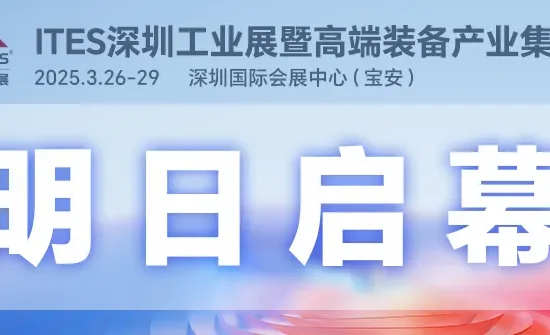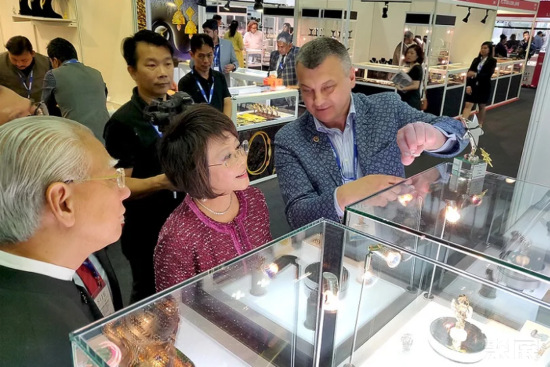
This is the second time in historythe Camaro is dead. Chevrolet discontinued the Camaro in 2002 after a 32-year run, then resurrected it in 2010 but stopped production again after the 2024 model year. Rumor has it that it will return as an electric performance car, possibly a sedan. Only time will tell, but if that’s the case, the Camaro will have to maintain the style and performance that fans have loved since 1966.
During its lifespan, the Camaro went through six generations, each with its own special model that further raised the already high performance benchmark. From the original SS model, to the doldrums of the 1970s, to the performance renaissance of the 1980s, to the return of two generations of retro styling in the 21st century, here are the 12 best Camaros from the lifespan of this amazing pony car.
1967 Camaro
The Camaro debuted on September 12, 1966, as a four-passenger coupe and convertible. It was widely considered a response to the popular 1964 Ford Mustang, but Chevrolet had been toying with the idea since 1962. The car was based on the upcoming next-generation Chevy II/Nova unibody platform with a front subframe. The 1967 Camaro had a base price of $2,466, and like the Mustang, it was a small car with a large selection of inline-6 and V-8 engines in a compact package. The most powerful standard series Camaro was the 325-horsepower SS396, but a limited number of special-order SS396s made 375 horsepower. In its first year, Chevrolet sold 220,917 Camaros, while Ford sold 472,121 Mustangs.

1967 Camaro Z-28
Although the Z-28 wasn’t the most powerful Camaro that first year, it was the best handling choice. Developed to qualify the Camaro for the Sports Car Club of America’s newly introduced Trans Am class, the Z-28 featured a 302-cid V-8 engine that made 290 horsepower and revved high. It was essentially a 327 block mated to a 283 crankshaft. A stiffer F41 suspension improved handling, and exterior changes included dual hood and trunk stripes and rally wheels on red-striped tires. Only 602 Z-28s were produced for the 1967 model year, making it a highly sought-after collector car today. Z-28 Camaros won three of the 12 Trans Am events in 1967, just one less than the championship-winning Mustang, but Camaros would continue to dominate the 1968 season.

1969 Yenko/SC Camaro
Through Chevrolet’s Central Office Production Order (COPO) program, Chevrolet dealer Don Yenko ordered specially outfitted Camaros and sold them through his Pennsylvania dealership as Yenko/SC, or “Super Camaro.” The factory-built cars were powered by Chevrolet’s L72 iron-block 427-cubic-inch V-8 engine, officially rated at 425 horsepower, although Yenko claimed 450. They also had disc brakes, positive traction, a hood scoop, and a heavy-duty suspension. Dealers added striping, badging, and “SYC” headrest logos. A total of 201 1969 Yenko Camaros were sold, and the remaining ones are now quite expensive.

1969 ZL-1 Camaro
The most powerful and rarest Camaro of the 1960s was the legendary ZL-1, which was essentially a drag racing factory car prepared for the National Hot Car Association Super Stock competition. Available only through the COPO program, the ZL-1 had at its heart an aluminum-block 427-cid V-8 racing engine that officially produced 430 horsepower, but could actually produce more than 500 horsepower. The cars also featured a cold-air intake, Harrison quad radiator, transistorized ignition, multi-leaf rear springs, and a heavy-duty 4.10 12-bolt rear end—all staples of drag racing. Only 69 of these powerful Camaros were produced, making the ZL-1 one of the most valuable Camaros available today. The car shown here is the first one ever built and comes complete with full drag racing badging. It sold at a Mecum auction in 2012 for $400,000. Imagine what it would do today.

1970 1/2 Camaro Z28
The second generation Camaro debuted on February 26, 1970, only in coupe form. It borrowed styling cues from Jaguar and Ferrari and was considered one of the most beautiful cars ever produced by Detroit. The new car was longer, lower, and wider than its predecessor, giving it more interior space. It handled better and had a softer ride. All of these improvements led Road & Track magazine to call it the best American car of its time. The Z-28 package featured a 360-horsepower LT1 350 cubic-inch V8 engine from the Corvette. Car & Driver drove the Z28 from 0 to 60 mph in just 5.8 seconds. The V-8 Camaro started at $2,726, and the Z-28 package cost another $572.95.

1987 Camaro IROC-Z
Gasoline shortages and government emissions regulations sapped Camaros’ power in the mid-1970s, but a decade later, it was back. The Camaro IROC-Z replaced the Z-28 as the Camaro performance leader starting in 1985, but the 1987 model was significant for two reasons. First, the 305 cubic-inch V-8 gave way to a 350 cubic-inch (5.7-liter) V-8, which added an extra 10 horsepower for a total of 225 horsepower. Second, the convertible body style returned for the first time since 1969. The 5.7 was a $1,045 option on the IROC-Z that pushed the car’s 0-to-60-mph time to 6.3 seconds. The IROC-Z was named after the International Championship, which pitted star drivers from around the world against each other in equally race-prepped Camaros.

2002 Camaro 35th Anniversary Edition
Declining demand for sport coupes due to the proliferation of SUVs spelled the end of the Camaro after the 2002 model year. Chevrolet responded with a $2,500 Camaro 35th Anniversary Package for SS coupes and convertibles. Available only in red, the package included silver stripes with a checkered flag pattern, unique fender badges, embroidered headrest emblems, and special 10-spoke wheels with machined surfaces and black accents. Power was provided by the LS1-V-8, now up to 325 horsepower. Performance was thrilling. In Motor Trend testing, 0-60 mph took just 5.2 seconds, and the quarter-mile took 13.5 seconds. But it wasn’t enough to sustain sales, and the Camaro was discontinued for eight years.

2012 Camaro ZL1
The 2010 Camaro returned in coupe and convertible form, and Chevrolet engineers quickly set to work developing a car worthy of the revered ZL1 moniker. Under the hood, they installed a supercharged 6.2-liter LSA V-8 from the Cadillac CTS-V that produced 580 horsepower. Other performance upgrades included increasingly larger Goodyear Supercar tires on lightweight alloy wheels, GM’s fast-acting Magnetic Ride Control shock absorbers, and massive Brembo brakes at all four corners. In Car and Driver testing, the ZL1 went from 0 to 60 mph in four seconds flat and ran the quarter mile in an impressive 12.3 seconds. At about $57,000 including the gas guzzler tax, the 2012 ZL1 was the most expensive Camaro ever made, but two years later, it was surpassed by a whole lot more money.

2013 Camaro 1LE
When it returned as a 2010 model, the Camaro’s ride and handling weren’t great. However, Chevrolet continued to make improvements, and the 2013 1LE package is the result of much of that work. Inspired by a little-known competition package from the late 1980s, the 1LE package is a $3,500 option for the Camaro SS. It features the stickier front tires and lightweight front wheels from the ZL1 (although on all four corners), thicker front and rear stabilizer bars, monotube rear shocks, a front strut tower brace, a high-capacity fuel pump, and a short-throw shifter. Exterior changes include a flat black wrap for the hood, a black rear spoiler, a black front splitter, and a steering wheel with V-shaped spokes. For the price, the 1LE makes the Camaro the best-handling small car under $40,000.

2014 Camaro Z/28
A mid-cycle design refresh resulted in the best-handling Camaro yet. That’s because the car was equipped with track-specific equipment. The resurrected Camaro Z/28 uses the same suspension tuning used by the Camaro 1LE package, but with stiffer dampers, thicker anti-roll bars, unique monotube shocks, and lighter 19-inch wheels and tires. It’s 300 pounds lighter than the performance king ZL1, and the body kit improves downforce. The biggest help on the track, however, are the Pirelli P Zero Trofeo R tires (basically street racing tires) and standard carbon-ceramic brakes. Of course, the 7.0-liter, 505-horsepower V8 engine from the Corvette Z06 also contributes to the exploits of this track athlete. 0-60 mph acceleration takes 4.4 seconds, and the quarter-mile time is 12.7 seconds. This means that the Z/28 is not as fast as the ZL1 in a straight line, but it is faster on the track due to its good grip and strong brakes. The price is also higher, at $76,000.

2017 Camaro SS 1LE
Chevrolet redesigned the Camaro for 2016. A new platform derived from the Cadillac ATS adds body strength and reduces weight by at least 223 pounds. Well-tuned electric power steering makes turning the wheel a pleasure, while the Corvette-derived LT1 V-8 engine delivers performance numbers only previously achieved with Camaro-specific engines. It pumps out 455 horsepower in the SS model, enabling a 0-60 mph time of around four seconds and a quarter-mile in the low 12s. The 2017 Camaro SS really comes into its own, though, when Chevy adds the SS 1LE package. It gets excellent magnetic dampers, an electronic limited-slip differential, Brembo brakes with six-piston calipers and 14.6-inch two-piece rotors, Recaro bucket seats, and, most importantly for track driving, additional cooling for the oil, differential, and transmission. We liked the redesigned Camaro so much that we named the SS Motor Authority’s Best Car to Buy for 2016, and the 2017 Camaro SS 1LE is even more powerful, more agile, and faster.

2017 Camaro ZL1
Chevrolet saved the best for last. The 2017 Camaro ZL1 is the pinnacle of Camaro performance. It’s powered by a supercharged 6.2-liter LT4 V-8 engine that produces up to 650 horsepower and 650 pound-feet of torque, cutting 0-60 mph to 3.5 seconds, the quarter-mile to 11.4 seconds, and raising top speed to 198 mph. It’s paired with a slick-shifting 6-speed manual transmission or a 10-speed automatic with rev-matching downshifts. Not only is it blisteringly fast, but it rides confidently with its 285/30R20 front and 305/30R20 rear Goodyear Eagle F1 Supercar tires. Its suspension has all the upgrades of the SS 1LE package, plus the addition of a heat exchanger (11 total) and larger 15.35-inch two-piece front rotors. Those who want something a little more hardcore can opt for the ZL1 1LE package, which replaces the Multimatic DSSV dampers with ride-height-adjustable front struts and Goodyear Eagle F1 Supercar 3R tires (305 front and 325 rear). The ultimate track show car also benefits from a lighter rear seat, a larger grille opening for increased airflow, a front dive plane and carbon fiber rear wing for increased downforce, and an aluminum hood with a carbon fiber insert.
High-resolution gallery: 1967 Camaro RS
This article was originally published by ClassicCars.com’s editorial partner Motor Authority











Leave a Reply Cancel reply
You must be logged in to post a comment.